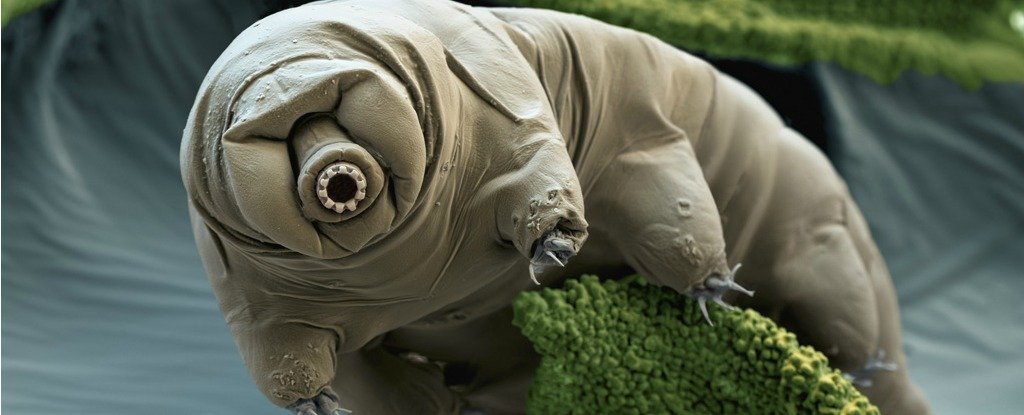
NOTE: New information regarding this study has come to light. Please see this article for updated information.
Tardigrades
Tardigrades, also known as water bears, are known to be amazingly durable organisms. In fact, they are heralded as the most resilient organism that we’ve ever encountered—the most extreme of the extremophiles.
Despite their name, these organisms aren’t large and furry grizzlies, as one may imagine. Actually, they aren’t really like any bear that you are familiar with. They don’t even have four legs. They are actually water-dwelling, eight-legged, segmented micro-animals. And, despite their tiny size, these creatures can take quite the punch.
They can withstand gamma radiation, oxygen deprivation, and the intense blast of solar wind. They can survive pressures about six times greater than those found in the deepest ocean trenches, ionizing radiation at doses hundreds of times higher than the lethal dose for a human, and even survive continued exposure to the vacuum of outer space. They can go without food or water for over ten years, and live quite comfortably in temperatures far exceeding the boiling point of water or plunging to a sub-zero chill. Indeed, they can live in temperatures going all the way down to−272°C (-457°F), which is just a few degrees above absolute zero.
Such impressive characteristics have, of course, baffled researchers and made them incredibly curious about the micro-animals, wondering if such traits can be mimicked or duplicated for various applications, such as industry, which normally has extreme conditions.
Unsurprisingly, the tardigrades’ bizarre traits are reflected in their bizarre DNA, which has now been sequenced.
Tardigrade DNA
What is surprising in the tardigrade DNA is that its composition is 17.5% foreign DNA (“foreign DNA” refers to DNA segments that came from another organism via horizontal gene transfer). To put that into perspective, the rotifer, which is another microscopic water creature, was believed to have the most foreign genes of any animal, with 8 or 9%.
The tardigrade seems to have 6,000 genes from other species, such an extent of foreign DNA was never even thought to be possible.
The foreign DNA comes primarily from bacteria, but also from plants, fungi, and Archaea. Of course it’s this incredible variety of genes that, researchers suggest, has allowed the water bear to survive in such extreme conditions. Bacterial genes might be better able to withstand stresses than animal ones, as shown by several extremophiles. Further research now needs to be done into exactly how tardigrades are obtaining this foreign DNA, and how often it’s happening.
Scientists think that this large amount of foreign DNA is because of one of the tardigrade’s survival mechanisms that allows it to survive without water for extended periods. When this happened, it dries itself out until its body is less than 3% water, and then comes back to life once they’re rehydrated. When this desiccation happens, scientists know that the DNA breaks down into tiny pieces. They also know that when the cells rehydrate, there’s a point when the cell nucleus is leaky, allowing DNA and other molecules to pass through. This may allow the tardigrade to integrate the foreign DNA.